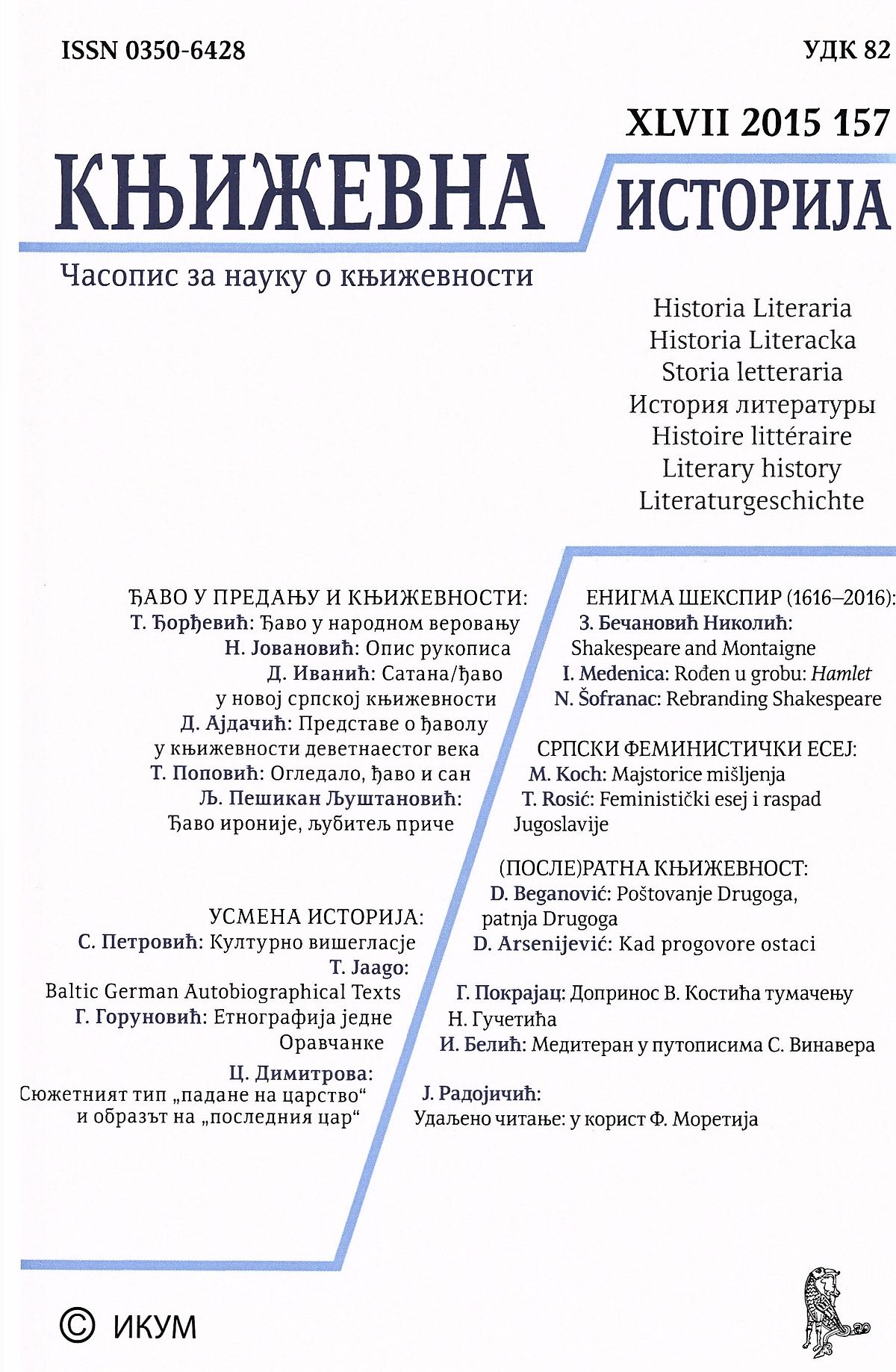Представе о ђаволу у руској, украјинској, пољској и српској књижевности деветнаестог века
Conceptions of the Devil in Russian, Ukrainian, Polish and Serbian 19th Century Literature
Author(s): Dejan AjdačićSubject(s): Polish Literature, Russian Literature, Serbian Literature, Ukrainian Literature, Theory of Literature
Published by: Институт за књижевност и уметност
Keywords: Russian literature; Ukrainian literature; Polish literature; Serbian literature; 19th century literature; demons; devil; Satan; thematology
Summary/Abstract: Conceptions of the devil in Russian, Ukrainian, Polish and Serbian literatures were taken from the polytheistic religion, Christianity and their mutual intertwining in folk Christianity, and from transformed motifs and various types of mythic, magical and rational thinking found in the 19th century literary movements. The devil is found under various names in the oral and written culture, and in the texts analysed here we find (1) names such as Satan, Lucifer, Asmodeus, Astaroth, Beelzebub, Antichrist, Mephisto, Pan Kopitinski etc.; (2) the fight between the Devil and God, the deal with the devil, exorcism, the devil as the tempter, the devil in hell, the devil at the sabbath, the devil in a dream, the devil’s servant/child/disciple, the devil in love, and the powerless devil. The section dealing with the themes that involve the devil touches upon the features of chronotopes, characters, ideas and intertextual connections. We also refer to works which mention demons in 19th century Slavic literatures by literary historians such as Renate Lachmann, Yuri Lotman, Yuri Mann, Jan Tomkowski, Alois Schmaus, Dejan Ajdačić etc.
Journal: Књижевна историја
- Issue Year: 47/2015
- Issue No: 157
- Page Range: 75-100
- Page Count: 26
- Language: Serbian

